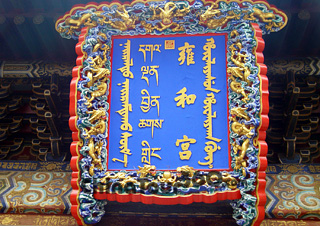 Beijing Yonghe Lamasery
Beijing Yonghe Lamasery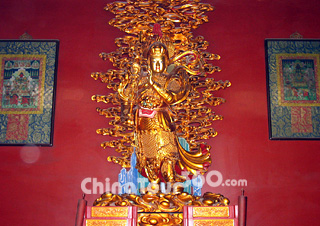 A Gilt Buddha Statue
A Gilt Buddha Statue A Stone Lion
A Stone Lion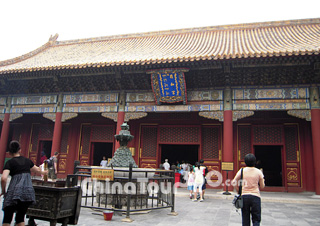 Yonghe Palace Hall
Yonghe Palace Hall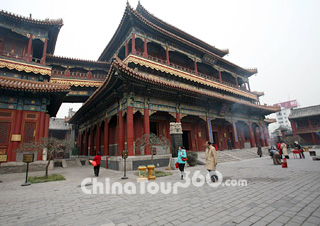 Yonghe Lamasery
Yonghe Lamasery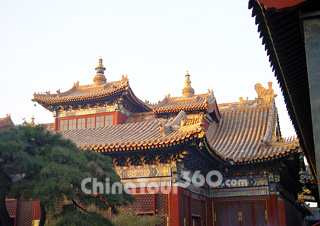 Buildings of Lama Temple
Buildings of Lama Temple
As the largest and best-preserved lamasery in Beijing, the Lama Temple (Yonghegong) is located in the northeast part of the city, on the eastern side of Lama Temple Street. Yonghegong, meaning 'Palace of Eternal Harmony', was built in 1694 originally as a residence for Prince Yongzheng before he ascended the throne. After Yongzheng's death in 1735, his coffin was placed in the temple. Emperor Qianlong, his successor, upgraded Yonghegong to an imperial palace with its turquoise tiles replaced by yellow tiles (yellow was the imperial color in the Qing Dynasty, 1644 - 1911). During the 9th year of Emperor Qianlong's region (1744), it was converted into a lamasery and became a residence for large numbers of monks from Mongolia and Tibet.
Covering an area of 66,000 square meters (16.3 square miles), it is a combination of mainstream Han and ethnic Tibetan Buddhist architectural styles. The temple has a total of 1,000 rooms, featuring five large halls and five courtyards with beautifully decorative archways, unturned eaves and carved details. It houses a treasury of Buddhist art, including sculptured images of gods, demons and Buddhas, as well as Tibetan style murals.
The temple is arranged along a north-south central axis, which has a length of 480 meters (525 yards). The main gate is at the southern end of this axis. Along the axis, there are five main halls which are separated by courtyards: the Hall of the Heavenly Kings (Tian Wang Dian or Devaraja Hall), the Hall of Harmony and Peace (Yonghegong), the Hall of Everlasting Protection (Yongyoudian), the Hall of the Wheel of the Law (Falundian), and the Pavilion of Ten Thousand Happinesses (Wanfuge). The Hall of the Heavenly Kings is the southernmost of the main halls, it served originally as the main entrance to the monastery. In the center of the hall stands a statue of the Maitreya Buddha, along the walls statues of the four Heavenly Kings are arranged.
Ten-Thousand-Happiness Pavilion (Wanfuge) is the largest pavilion in the temple. In the center of the pavilion is a huge standing statue of Maitreya Buddha of the Future carved out of a single trunk of white sandalwood tree presented by the Seventh Dalai Lama. It is 26 meters (85 feet) high 18 meters (59 feet) above the ground and 8 meters (26 feet) under the ground and 8 meters (26 feet) in diameter. According to the Guinness Book of World Records the Maitreya is the tallest and biggest in the world today. Behind the Great Buddha there are ten thousand small Buddhist statues on three storey hence the name Ten-Thousand-Happiness Pavilion.
![]() Entrance Feet: CNY 25
Entrance Feet: CNY 25
![]() Opening Hours: 09:00 - 16:00
Opening Hours: 09:00 - 16:00
![]() Transportation:
Transportation:
A. Bus Routes:
Take Bus No. 13, 44, 116,117, 684 or 807 and get off at Yonghegong (Lama Temple)
B. Subway:
Take Subway Line 2 or 5 and get off at Yonghegong Station.








